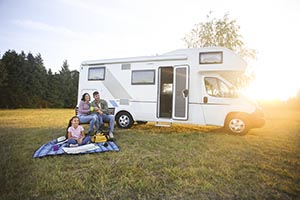Real stories about raising backyard chickens
We wanted to get the scoop on raising backyard chickens, so we spoke with three people who have, or used to have, a coop. Here’s what they said:
Ellen, St. Paul, Minnesota
I got into raising backyard chickens for novelty. What greased the wheels was that I had a friend who was a farm manager with a surplus of chicks. We had a big yard, with no immediate neighbors so I did not need permission. I started with a flock of nine. I never lost a chicken to a predator, but I did lose several to illness.
Our coop was a converted children’s playhouse attached to the garage with a 10-foot square pen outside. We also let the chickens roam the yard. They loved that. They would rush to the gate of the pen when they saw us outside and bob up and down begging to be let out into the yard.
Our chickens were really like pets. None were good layers, so it wasn’t about the eggs. You could say they added a certain ambiance to the property. We were famous on the westside for our chickens.
The biggest challenge was winter. Even with a small heat panel in the coop, I worried about them freezing. One night it got down to -24 degrees, and I got a big box and put them in the basement. A few years later we sold our house, and the new owner kept the chickens. Now that my husband and I are retired we’re OK not having hens. We like the freedom to travel.
As for costs, because I had a farmer friend who helped with the birds and because we converted an existing space into the coop, my costs were fairly low. Each month we probably spent $25-ish? And that includes food. The chickens loved table scraps, and of course they ate insects. Cats and dogs are way WAY more expensive.
Jen, Fort Collins, Colorado
I do a lot of gardening and canning, and I have been researching and dabbling in urban homesteading. A year and a half ago, we finally decided to clear out our old shed and convert it into a coop. This was before egg prices shot way up, so the savings have just been kind of a bonus! Plus, it's nice being able to share them with our friends and neighbors, and especially these days, they're very happy to have them.
We haven’t spent a lot. The chickens cost us around $8 each and we spend maybe $15 a month on feed. We use a heat lamp on really cold nights, which adds a negligible cost in electricity. The coop cost us nothing since we repurposed an existing structure and used reclaimed wood to build the boxes and the roost.
Even the chores are not really challenging; we just retrieve eggs once a day, make sure the barrels aren’t empty and clean out the coop once a week or so. They're so self-sufficient.
The hardest thing is probably just losing them. We lost one early on to a neighbor's dog and we lost another to an infection. They're not exactly pets to us, but we do love them, so saying goodbye is hard.
It's nice to have the chickens around, to have some creatures in the backyard making their little contented noises and being silly. We named one Frodo for the feathers on her feet (like hobbits' hairy feet!) And we named Mrs. Specklesworth for the white speckles on her otherwise dark red feathers.
But mostly, we really like knowing that we're just a little more self-sufficient than we would be without the chickens. And their eggs taste a lot better than grocery store ones, and they're prettier too! We get a range of dark brown (from our Moran) to very light tan (from our Buff Orpington) to blue and green eggs (from our Easter Eggers).
Dan, Minneapolis, Minnesota
My neighbor had chickens which is what first got me interested. My primary goal for having chickens was to have a source for good quality fresh eggs. I also thought it would be good for the family, the birds could teach my kids about responsibility and where food comes from. Plus, I knew they would provide great entertainment. But the last thing people should do is get chickens because it will get them cheaper eggs. It won’t be cheaper! And I knew that ahead of time.
My partner thought we could make a coop out of leftover wood pallets. But after I went on a local urban coop tour, I decided to make it more durable. I wanted it to be very low maintenance and to match the house. So, I built a giant roof that hangs over the run, that keeps the chickens dry and protected from predators; I added insulation to the walls and the floor, so I don’t have to worry about the winter cold; I have 5-gallon hanging feeders, two for food and two for water; and I use a lot of pine shavings so that I don’t have to shovel their poop too often. When I do shovel their poop, I put it into the compost pile and use it for my garden. It’s an excellent fertilizer. All in all, I probably spent a few thousand dollars getting my coop up and running. But on a monthly basis I only spend about $25.
Chickens are animals and they will do what chickens will do. Sometimes they are mean to each other. Sometimes they are not good egg layers. It’s hard to find a local vet who can help with chickens, so we had to learn husbandry and care for them ourselves.
On the other hand, the chickens are more fun than I thought they would be! They act like pets. My kids thought up a phrase to train them to come for treats. Whenever we say, “What up chickens?” they come running. I get a giggle out of that.
Also, in the summer we can get 5-6 eggs a week per chicken – which is an abundance – so it has been a lot of fun to give them away.
If raising your own backyard chickens is a near-term or long-term idea, you may want to start saving for your coop to help keep track of your spending.






















































































































